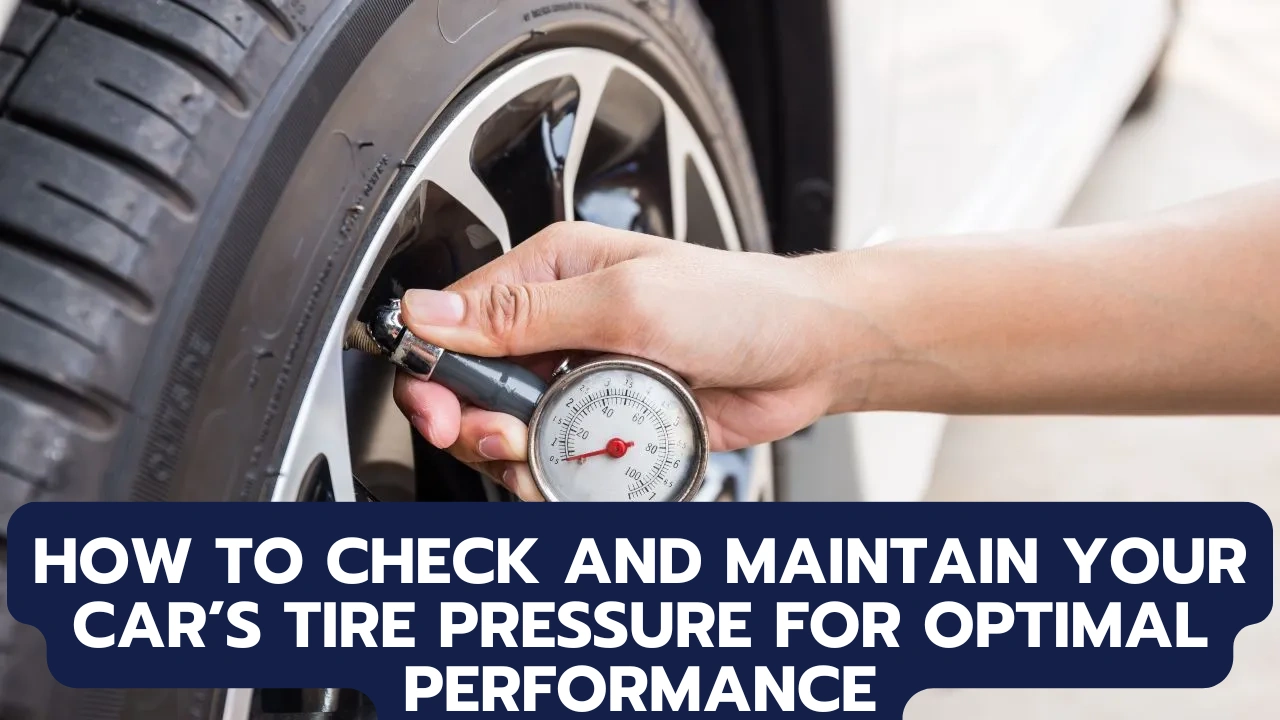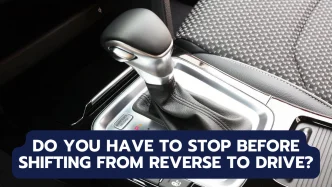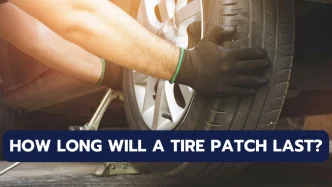Your tires are a critical component of your vehicle’s performance and safety, forming the essential contact between your car and the road. Proper tire maintenance is not just about extending their lifespan — it directly impacts fuel economy, handling, and overall safety. One of the most fundamental yet often overlooked aspects of tire care is maintaining the correct air pressure. Ensuring your tires are properly inflated can prevent blowouts, improve mileage, and provide better handling. Here’s everything you need to know about checking and maintaining your car’s tire pressure.
Why Is Proper Tire Pressure Important?
Tire pressure affects nearly every aspect of your vehicle’s performance. When tires are under-inflated, they generate more friction and heat, increasing the risk of dangerous blowouts. Over-inflated tires, on the other hand, can reduce traction and lead to uneven tire wear. Here are the primary reasons why maintaining the correct tire pressure is crucial:
- Fuel Efficiency: Properly inflated tires reduce rolling resistance, helping your car achieve better gas mileage.
- Safety: Correct tire pressure enhances your car’s steering response and braking capability, minimizing the risk of accidents.
- Tire Longevity: Maintaining the correct pressure extends the life of your tires by preventing uneven wear.
- Prevents Blowouts: Under-inflated tires heat up quickly, increasing the risk of sudden blowouts, especially at high speeds.
Tires naturally lose about 1 pound per square inch (PSI) of pressure each month, even if everything is in good condition. Regular checks and adjustments are necessary to ensure your safety and your vehicle’s optimal performance.
Step-by-Step Guide to Measuring Tire Pressure
Checking tire pressure is a simple task that takes only a few minutes. Here’s how to do it accurately:
1. Get a Reliable Tire Pressure Gauge
To measure your tire pressure, you need a tire pressure gauge. You have two main options:
- Gas Station Gauges: Many gas stations offer tire gauges built into air compressors. However, these gauges are often inaccurate due to wear and tear from frequent use and being dropped.
- Personal Digital Gauge: Investing in a digital electronic tire gauge is a better option. These gauges provide precise, easy-to-read measurements and are affordable. Digital gauges usually measure pressure in half-pound increments, ensuring accuracy.
Having your own gauge means you can check your tires anywhere, anytime, without depending on the sometimes unreliable tools at gas stations.
2. Check Tire Pressure When Tires Are Cold
Temperature significantly impacts tire pressure. As you drive, tires warm up, increasing the pressure reading. Therefore, it’s best to measure tire pressure when your car has been parked for at least three hours, ideally overnight.
Why Cold Tires Matter: Manufacturers provide recommended pressure levels for cold tires. Checking hot tires may give you a falsely high reading, leading to incorrect adjustments.
3. Find Your Car’s Recommended Tire Pressure
Your vehicle’s recommended tire pressure can typically be found on a sticker located on the driver’s side door jamb or in the owner’s manual. Some vehicles specify different pressures for the front and rear tires. This information is usually given in PSI (pounds per square inch), though other units like kPa, BAR, or kg/cm² may also be listed.
Tip: Write down the recommended pressures for easy reference. Ensure your tire gauge is set to the same unit of measurement as listed on the sticker.
4. Measure the Pressure
- Remove the Valve Cap: Unscrew the cap on the tire’s valve stem and keep it somewhere safe, like your pocket or inside the car.
- Press the Gauge Firmly: Place the gauge’s nozzle firmly over the valve stem. You may hear a brief hiss of escaping air — this is normal.
- Read the Gauge: The gauge will display the current pressure. For digital gauges, the reading appears instantly. For manual gauges, a bar or dial will show the pressure level.
- Check All Tires: Repeat the process for all four tires, and don’t forget to check the spare tire occasionally.
How to Inflate or Deflate Your Tires
Inflating Tires
- Find a Source of Compressed Air: You can use a gas station air compressor or a portable air compressor. Portable compressors are convenient because you can use them at home or during emergencies.
- Remove Valve Caps: Unscrew all the tire valve caps and store them safely.
- Add Air: Attach the air hose to the valve stem and add air in short bursts, periodically checking the pressure with your gauge.
- Adjust as Needed: If the pressure is too low, continue adding air until it reaches the recommended level.
Deflating Tires
If your tires are over-inflated, you’ll need to release some air:
- Press the Gauge Gently: Press the gauge or a small tool (like a key) against the valve stem to let air out.
- Check the Pressure Again: Continue releasing air in small increments and check the pressure until it matches the manufacturer’s recommendation.
- Replace Valve Caps: Screw the caps back on tightly to prevent dirt and moisture from entering the valve stems.
When to Check Tire Pressure
Experts recommend checking your tire pressure at least once a month and before long trips. You should also check it whenever you notice changes in your car’s handling or ride quality. Significant changes in temperature can also affect tire pressure, so seasonal checks are essential.
How Often Should I Check My Tire Pressure?
It’s best to check your tire pressure once a month. If you notice a change in how your car drives, such as poor handling or a rougher ride, check your tires immediately. Monthly checks help catch slow leaks or minor punctures early.
Should I Check My Spare Tire?
Yes, your spare tire should be checked regularly. The last thing you want is a flat spare when you need it. Consult your owner’s manual for the correct pressure for your spare tire, as it often differs from the main tires.
What If I Need to Add Air to Hot Tires?
If you need to inflate your tires while they’re hot, add 3-4 PSI above the recommended cold tire pressure. When the tires cool down, check and adjust the pressure accordingly.
What Does the “Maximum Pressure” on the Tire Sidewall Mean?
The “Maximum Pressure” listed on the tire sidewall is the highest pressure the tire can safely hold. This is not the recommended tire pressure for normal driving. Always follow the manufacturer’s recommended pressures listed on the door jamb or in the owner’s manual.
Should I Use Nitrogen Instead of Air?
Some car dealers offer to fill tires with pure nitrogen, claiming benefits like reduced pressure loss over time. However, regular air is already 78% nitrogen. For the average driver, filling tires with pure nitrogen provides little benefit compared to regular air.
How Does TPMS (Tire Pressure Monitoring System) Work?
Most vehicles manufactured after 2007 are equipped with TPMS, which alerts you if tire pressure drops by 25% or more. However, relying solely on TPMS isn’t enough because a 25% pressure loss still negatively impacts fuel efficiency, handling, and tire wear. Regular manual checks remain essential.
Maintaining proper tire pressure is one of the simplest and most effective ways to ensure your vehicle performs optimally and safely. By making this a regular habit, you can save money on fuel, extend the life of your tires, and reduce the risk of accidents.













